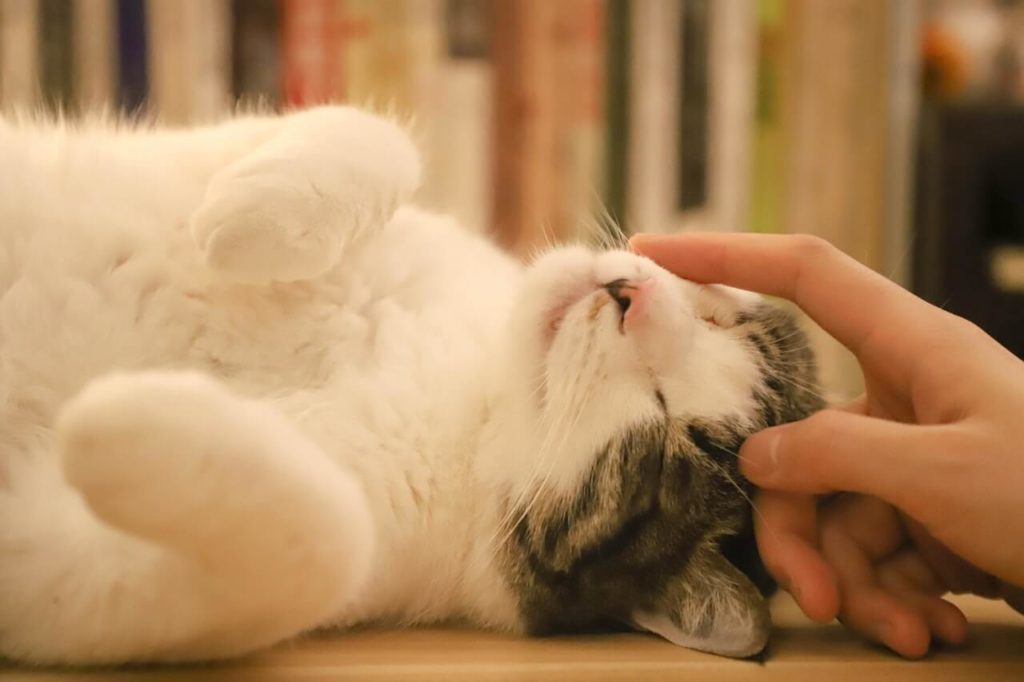Dog training has practically become a rite of passage when it comes to bringing a new puppy home. But did you know that training cats are also important? Can you train a cat? The answer is yes: Cat training can be especially useful when it comes to teaching your cat tricks, proper interaction with household members, and even house training.
Why Train Your Cat?
When thinking about how to train a cat, you might wonder why it’s important to train him or her. Especially when raising a kitten and learning about proper kitten care, training is a useful tool. Some of the most popular reasons for training cats are similar to those reasons for training dogs.
House Training
Just as you train your dog to wait until going outside to go to the bathroom, most cat owners would find the information useful on how to train your cat to use the toilet. Most cats will use litter boxes, but showing them how to do so is one of the first lessons when learning how to raise a kitten.
Related Article: How to get Rid of Cat Urine Smell
Coming When Called
Have you ever seen a cat come when his or her owner calls their name? It’s not as common as it is with dogs and their owners. However, you can train your cat to learn his or her name and come when called, too.
Calm Traveling
Take it from Hill’s: “If your cat learns to be calm during nail-trimming or travel, there will be no anxiety for her or you. The better mannered your cat is, the better your relationship will be.” Not only will it be easier for you to handle your cat, but it is also beneficial to your cat in reducing stress and anxiety.
Proper Playtime
When it comes to learning to care for a kitten, teaching proper playtime and interaction protocols is another important lesson. You can train your cat or kitten to play with other cats, and you also can teach them to play nicely with you.
Fun Tricks
Of course, cool tricks are one of the best parts of training any animal! Dogs aren’t the only pets who can learn novelty tricks. You can even train them to compete in agility tournaments, according to PetFinder.
Tips for Training

Other lessons might take more time. Respect your cat’s mood and gauge his or her interest level during the training process. If your cat is obviously over a lesson, it’s probably time to end it.
Baby Steps
Small steps lead to bigger steps, and progress is gradual. Practice one lesson or trick at a time so as not to confuse your cat with learning multiple new skills at once. Additionally, some tricks and skills are more complicated than others. Give your cat time to achieve each building block of a more complex skill before he or she is able to put it all together.
Involve Others
Learning how to train cats for better socialization and When learning how to train your cat, it’s actually not much different from learning how to train a dog. Regardless, knowing how to train a kitten or cat properly is vital to successful training. Your cat likely will respond to positivity, encouragement, and consistency. Determine what lessons or tricks you want your cat to learn and use the following tips to help you on your training journey.
Short and Sweet
Do you tend to get bored after sitting around or doing the same thing over and over? So will your cat. Think of your cat as a small child: His or her attention span is limited, and you can’t expect them to retain interest for long periods of time.
Hill’s recommends letting the lesson dictate how long your cat is willing to be in your company. How long lessons last also can depend on how quickly your cat or kitten responds to training. House training may not take as long if your kitten has watched its mother use the litter box, or if you’re bringing home an adult cat.
proper interaction is simple: Involve other people. You want your cat to learn to be social, not territorial. Hill’s recommends inviting friends or family members over shortly after bringing your cat home to socialize with him or her.
Your cat will still be getting used to his or her surroundings, so remind your guests to go slow. “Just as you practice training in small spurts, you should allow your pet the same leeway,” Hill’s states. Socializing is important for consistency and building relationships, too.
Rewards and Reinforcement
Cats almost always respond well to rewards, treats, and positive reinforcements. These are all great ways to motivate your cat during training. Your cat enjoys positive praise, so be sure to give her lots of it when she achieves a skill or takes a step toward it.
Talk to your cat kindly, lavishing praise in an upbeat voice, and telling him or her how proud you are. Examples include “What a good girl/boy,” “Yay, good job!” and “Atta girl/atta boy!” Cats can’t understand our language, so ensure you’re backing your praises up with some pats and scratches to convey positivity.
Treats are another great reward to give your cat when he or she masters a lesson or skill. Hill’s recommends using a clicker system in conjunction with treats. “When your cat performs the right behavior or action, sound a tool that clicks, and then give her a treat that signals a job well done,” Hill’s states. Your kitty will associate the noise with a job well done, and he or she will get a treat to go along with it.
What to Avoid

You want your cat to learn tricks, skills, or lessons and to be motivated while doing so — that’s why positive reinforcement is so important. Don’t taint a lesson with negativity or punishment. Your cat likely will become more reluctant to participate and may hide.
Keep your voice calm and don’t raise it or scold your kitty. If a cat feels threatened, he or she might also become afraid of you. And, of course, never physically harm your cat if he or she isn’t catching on.
That said, bad behavior doesn’t need to be tolerated. You can redirect bad behavior, such as scratching furniture, by making a quick, sharp noise like “Whoa!” or “Uh-uh!” The point of this, Hill’s states, is to alert and distract your cat from the current action or behavior.
Takeaway
In short, training a cat or kitten really is not any different from training a dog or puppy. Your animal likely will respond to positive reinforcement, consistency, and proper socialization when it comes to training. Whether you want to train your cat to fetch, use the litter box, or walk calmly into a crate or carrier, remember to be patient and have fun with it.











